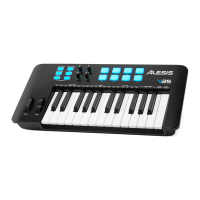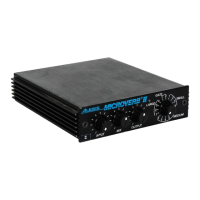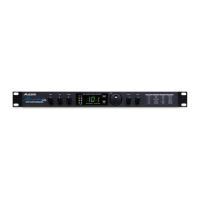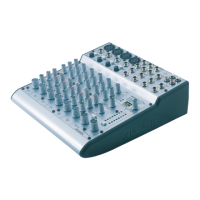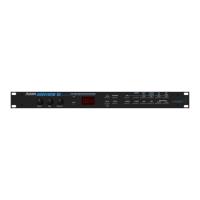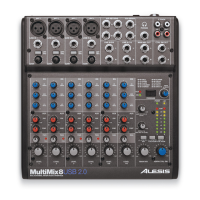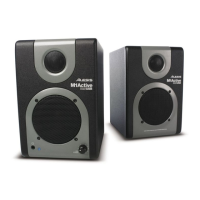Chapter 4
16 ALESIS ML-9600 REFERENCE MANUAL
4.6 ADDITIONAL PLAYLIST EDIT FUNCTIONS
4.6A EDITING TRACK NAMES
Editing a Track’s name is similar to editing a Playlist’s name; move the cursor to the Track Name field
and use the UP/YES and DOWN/NO keys to scroll through the alphanumeric character set for each of
the Track name’s eight characters. The character set includes A-Z, a-z, 0-9, and <space>.
TIP: Pressing UP/YES and DOWN/NO simultaneously while in the Track name field will cause the
currently edited character to become a <space>.
NOTE: When creating a CD24 disc, any lower-case letters will be automatically changed to upper-case
on the CD. This is due to a limitation of the ISO-9660 specification that the discs adhere to. Similarly,
spaces in names are automatically converted to underscores. For more information on CD24, see
Chapter 6: Creating A CD.
4.6B ADDING ADDITIONAL TRACKS
Additional Tracks can be added to the playlist by pressing the NEW TRACK button. Figure 4.6.1 shows
the New Track display.
Figure 4.6.1
New Track Display.
As you can see, this display is exactly like the display shown when editing a new playlist; only the
default name of the Track and the Track Number have been changed. Each time a new Track is created,
the default name will be “Song XX”, where XX indicates the number of the Track in the playlist.
4.6C MARK NEW TRACK WHILE RECORDING
Pressing the NEW TRACK button while recording will cause a new track to be created and audio to
begin to be written into that new track, without losing any audio data during the track creation process.
It can be thought of as an "on the fly" Track Split.
This feature can be extremely useful in live recording applications, in cases where either multiple takes
are occurring and it would be inconvenient to stop recording and create new Tracks, or if certain
portions of a recording (different movements in a classical performance, for example) need to be
marked separately. This feature is analogous to the "force start ID" feature on most DAT machines.
4.6D DELETING TRACKS
To delete a Track from a playlist, you must currently have that Track selected in the display. Pressing
the DEL TRACK button will cause a confirm delete page to be displayed, as shown in Figure 4.6.2:
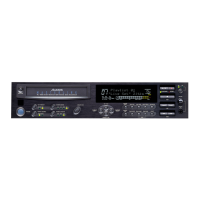
